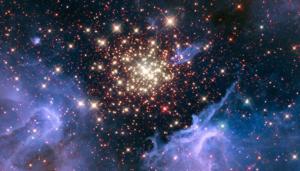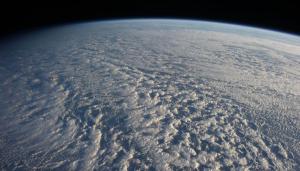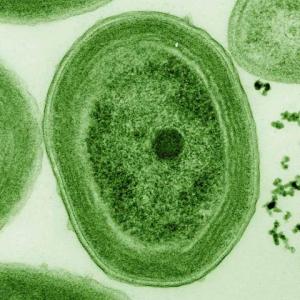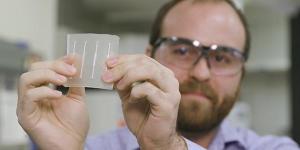LAB REPORT
Science and Technology Making Headlines
Jan. 17, 2020

Europe recorded its hottest year ever in 2019, and a sizzling heat wave in July saw temperature records crumble. Paris registered a sweltering 108.7 degrees July 25, shattering a record set in 1947.
Is it hot enough for you?
According to new research, 2019 capped off the world’s hottest decade in recorded history. It also marked the second warmest year ever.
The past five years each rank among the five hottest since record-keeping began. And 19 of the hottest 20 years have occurred during the past two decades.
The warming trend also bears the unmistakable fingerprint of humans, who continue to emit tens of billions of tons of carbon dioxide into the atmosphere each year, scientists say.
“The evidence isn’t just in surface temperature,” Benjamin Santer, a researcher at Lawrence Livermore National Laboratory, said of the human-fueled warming trend. “It’s Arctic sea ice. It’s atmospheric water vapor increases. It’s changes in glaciers in Alaska. It’s changes in the Greenland Ice Sheet. It’s all of the above."


A region of star births nestled within the ingredients needed for star formation: clouds of interstellar gas and space dust. The nebula here resides 20,000 light-years away in the constellation Carina. It contains a central cluster of huge, hot stars. Image courtesy of Hubble Heritage Team/NASA/ESA.
One stellar baby boom
Stars have life cycles. They’re born when bits of dust and gas floating through space find each other and collapse in on each other and heat up. They burn for millions to billions of years, and then they die. When they die, they pitch the particles that formed in their winds out into space, and those bits of stardust eventually form new stars, along with new planets and moons and meteorites.
Although dust only presents about 1 percent of the mass in the interstellar medium (ISM), it carries a large fraction of the elements heavier than helium, including the elements that form terrestrial planets and are essential for life.
Gaining increased knowledge about its composition and life cycle is valuable. A Lawrence Livermore National Laboratory scientist and international collaborators are doing just that. The team recently dated micrometer-sized silicon carbide stardust grains extracted from the Murchison meteorite and found they formed anywhere from 1.5 million to 3 billion years before the formation of our solar system.
Stardust grains are the oldest datable solid samples available for study in the laboratory and provide invaluable insight into the presolar chronology of our galaxy.


Stratocumulus clouds like these seen from the International Space Station are ubiquitous across the global oceans, reflecting sunlight and keeping Earth cooler than otherwise. Global climate models predict that their ability to shade the Earth weakens with global warming — an amplifying feedback, and one that has strengthened in the latest models. Image courtesy of NASA.
Climate models offer up a cloudy outlook
New climate models show carbon dioxide is a more potent greenhouse gas than previously understood, according to new research by Lawrence Livermore scientists and collaborators.
Developed in parallel by separate teams in a half dozen countries, the models -- which will underpin revised United Nations temperature projections next year -- suggest scientists have for decades consistently underestimated the warming potential of CO2.
The primary culprits for the increased warming, the team discovered, were clouds.
“Clouds are Earth’s sunscreen, reflecting away sunlight and keeping the planet cooler than it would otherwise be,” explained Mark Zelinka, LLNL climate scientist and lead author of the study.
If global warming leads to fewer or thinner clouds, it causes additional warming above and beyond that coming from carbon dioxide alone.


Cyanobacteria like the Prochlorococcus cell are frequently infected with viruses that manipulate their photosynthesis. Image courtesy of Luke Thompson/Chisholm Lab and Nikki Watson/MIT.
Viruses go viral
Viruses control their hosts like puppets -- and in the process, they may play important roles in Earth’s climate.
The hosts in this case are bacteria. A growing body of research is revealing how viruses manipulate what bacteria eat and how they guide the chemical reactions that sustain life. When those changes happen to a lot of bacteria, the cumulative effects could potentially shape the composition and behavior of Earth's oceans, soil and air.
"We think that viruses have this huge impact that we just don't know about," said Gary Trubl, a soil virus ecologist at Lawrence Livermore National Laboratory. "They can actually impact the environment."


By combining fluidics technology with cell seeding, Lawrence Livermore National Laboratory researchers have developed a device capable of reproducing the human blood-brain barrier on a chip-based platform in both 2D and 3D, bringing them one step closer to recapitulating the brain’s response to biochemical and mechanical cues. Photos by Maren Hunsberger/LLNL.
Will the real blood brain barrier please stand up?
The blood brain barrier (BBB) in humans consists of blood vessels and tissues that regulate the passage of chemicals and other substances going from the bloodstream into the brain. It does a good job of keeping potentially harmful molecules from crossing over and affecting the central nervous system. The downside is that if clinicians need to treat a brain problem, such as toxic chemical exposure or a tumor, it’s difficult to get therapeutic drugs across that barrier to do their jobs.
Currently scientists rely heavily on animal models to develop drugs that can make it safely past the barrier. But animals aren’t the best models for humans. Having a low-cost and accurate computer model that mimics the BBB could help in developing drugs and countermeasures to chemicals and biological agents that affect the brain.
Engineers and biologists at Lawrence Livermore National Laboratory recently made significant strides in modeling the BBB in 2D and 3D by combining fluidics with cell seeding. This combination also models cultures of cells around the barrier in both static and flow states, a development that would make future brain-on-a-chip devices more physiologically relevant.
LLNL’s flexible approach, researchers say, will become a valuable tool for studying the BBB, letting scientists carry out a variety of experiments such as improving drug delivery and understanding disruptions that cause brain disorders, and to easily observe and analyze changes in the brain cells without changing the device.





